How Is It When All the Ice on Earth Melts?
The ice around the north and south poles makes up 10 percent of the entire surface of our planet, and the earth is estimated to contain five million cubic miles of frozen water - so what would happen if all the ice in the earth melted?
National Geographic has created a series of interactive maps that show what disaster will happen if all the ice in the earth melts and flows into the oceans and seas.
The melting of all the ice in the earth can cause sea levels to rise 65.8 meters, drowning cities, even countries and drastically altering how continents and coastlines are visible and destroying the entire population.
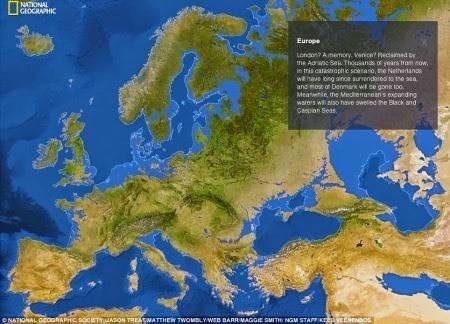
If the ice melts, the whole world will be affected. In Europe, cities including London and Venice will disappear under water, as will the rest of the Netherlands and most of Denmark. This will also cause the Mediterranean Sea to expand and swell the Black Sea and Caspian sea.
Scientists believe that it will take about 5,000 years for the temperature to rise significantly enough to melt all the ice on the planet, but with global warming going on, we've seen the start of this disaster.
Over the course of a century, reports indicate that the earth's temperature has risen by about half a degree Celsius and according to the US Environmental Protection Agency (EPA), this has caused sea levels to rise by about seven inches.
The largest concentrations of ice on Earth are found in Greenland and Antarctica but are also found on mountain tops and in other areas. The eastern Antarctic ice sheet, for example, is so large and contains about 80 percent of all the ice on the planet and its size has been protected since the last warming period in Earth's history.
That is during the Eocene period - the period of global temperature increased which lasted 55.8 ± 0.2 to 33.9 ± 0.1 million years ago. During this time period, little or no ice is present on earth and there is only slight temperature difference at the equator compared to the poles.
Sea heating has melted the ice sheet floating in western Antarctica and since 1992, National Geographic reports that this ice sheet has lost about 65 million metric tons of ice every year.
The ice sheets in Greenland and western Antarctica have shrunk significantly during the last Eocene period and if the temperature rises in the same way again, the ice sheets in this area can disappear into the sea completely.
The last time the Earth was ice-free was 34 million years ago during the Eocene epoch. If this happens again, the entire Atlantic coast in the US will disappear, wiping out Florida and the Gulf Coast. While the hill in San Francisco will be the island and San Diego will be gone forever.
In Europe, cities including London and Venice will disappear underwater, as will be the case throughout the Netherlands and most of Denmark.
The EPA claims that overall ice reduction depends on several factors, including increases in greenhouse gases and how global temperatures react to the increase in the gas.
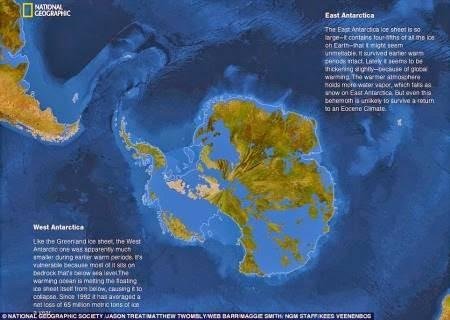
The largest concentrations of ice on Earth are found in Greenland and Antarctica. Sea warming has melted the ice sheet that is floating in western Antarctica and since 1992, National Geographic reports that about 65 million metric tons of ice sheets melt every year.
The increase in greenhouse gases can be caused by humans. National geographic explains: "If we burn all the coal, oil, and gas supplies on earth, which means adding about five trillion tons more carbon into the atmosphere, then we're going to make the planet very hot with temperatures averaging 26, 6 degrees Celsius, well above the average current temperature of only 14.4 degrees Celsius. Such high temperatures would be too hot for humans.
This will make ice-free Earth for the first time since the last 34 million years. If this happens, the entire Atlantic coast in the US will disappear, wiping out Florida and the Gulf Coast. While the hill in San Francisco will be the island and San Diego will be gone forever.
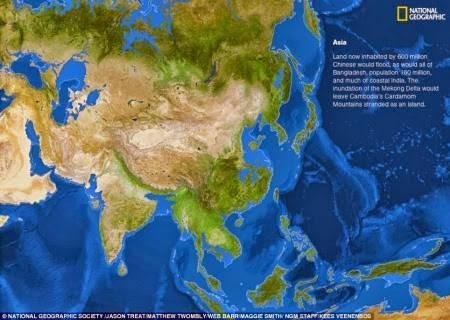
In the east, parts of Asia including China and Bangladesh will actually experience massive floods, wiping out about 760 million people based on coastal populations. The population of India will also be reduced.
While in South America, the Amazon Basin and Paraguay will become Atlantic inlets and this will remove Buenos Aires, Uruguay coast, and some areas of Paraguay.
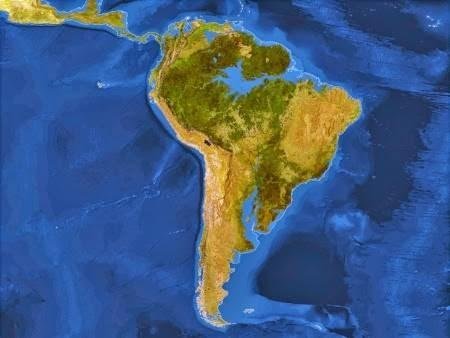
The only areas that will survive are the mountains that stretch along the coasts of the Caribbean and Central America. The other continents will also be affected and will continue to change the shoreline.
In the east, parts of Asia, including China and Bangladesh will be completely flooded, wiping out about 760 million individuals by the current population level. Part of the coastline of India will also be lost and eroded inland.
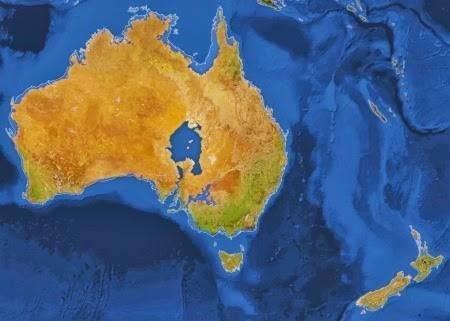
In Africa, eg Egypt, Alexandria and Cairo will flood but the continent will not lose much of its land if sea levels rise. But National Geographic claims that rising earth temperatures will probably make most of the land uninhabitable by humans.
Australia will get the new inland sea (ocean in the middle), but australia will also lose many coastal areas today, where four out of five Australians live.
Well, What about Indonesia? See the map below:
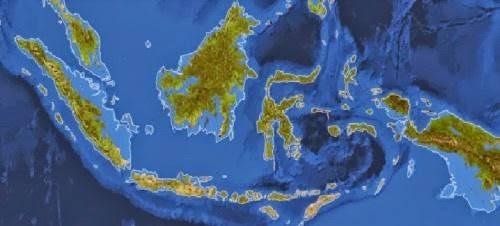
It appears that the east coast of Sumatra such as Riau, Jambi and parts of Palembang, Lampung will be submerged. Likewise a small part of the West Coast of Sumatra, leaving only the hill and the area that is still a land. Likewise also the island of Java. Jakarta, Semarang, Yogya, Surabaya will be drowned.
Most of southern Borneo also sank along with most of the southern island of Papua. Sulawesi will also be cut off between the middle and the north.
Follow me